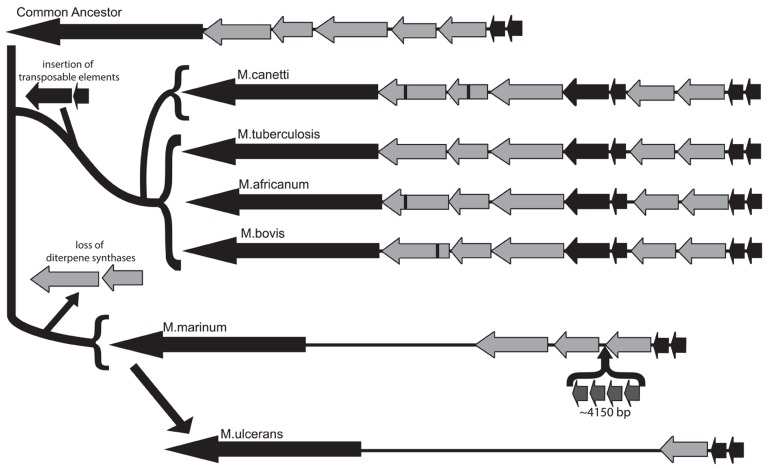FIGURE 5.
Conservation of the isoTb operon in the MTC and closely related mycobacteria. Analysis of the isoTb operon in the context of wider mycobacterial evolution indicates the operon was likely acquired in the most recent common ancestor to the MTC and M. marinum. The functional genes in the operon (light gray arrows) were retained during the speciation events leading to M. canetti, Mtb, M. africanum, and M. bovis, following which the operon independently evolved in each species, as evidenced by unique insertion–deletion and/or non-synonymous mutations in the diterpene synthases (black bars). Further, following separation of M. marinum and the MTC, the diterpene synthases were lost from M. marinum and several genes inserted, thus disrupting the operon. During later reductive speciation leading to M. ulcerans, two of the remaining genes were lost, leaving only the homolog to Rv3383c and flanking segments of the genome. Notably, retention of fully functional diterpene synthase encoding genes (Rv3377c and Rv3378c) is only found in the human-specific pathogen Mtb.

